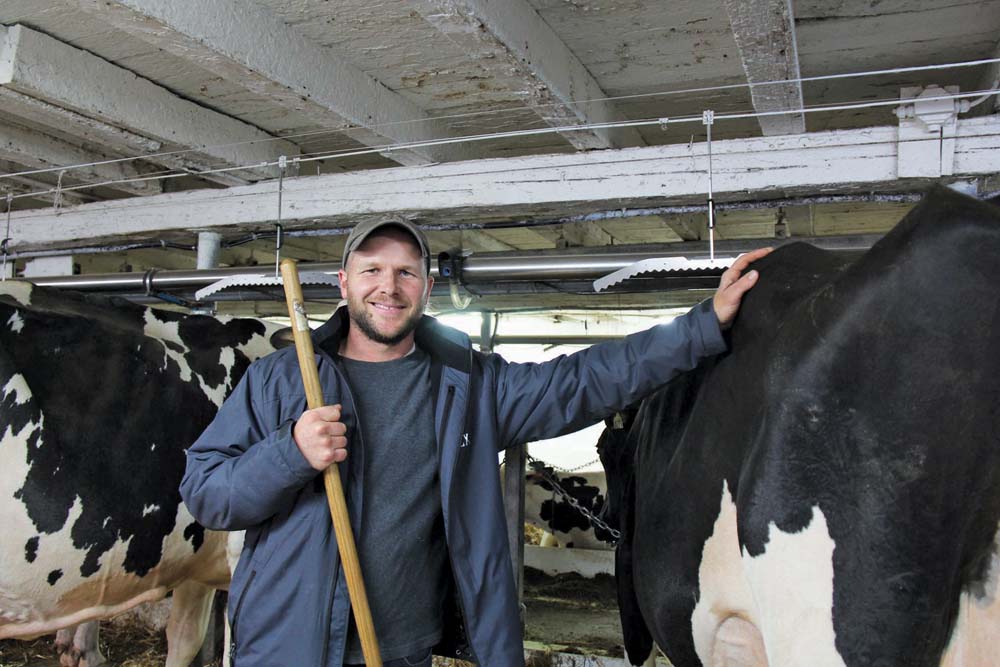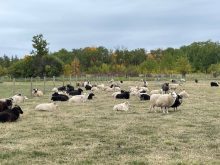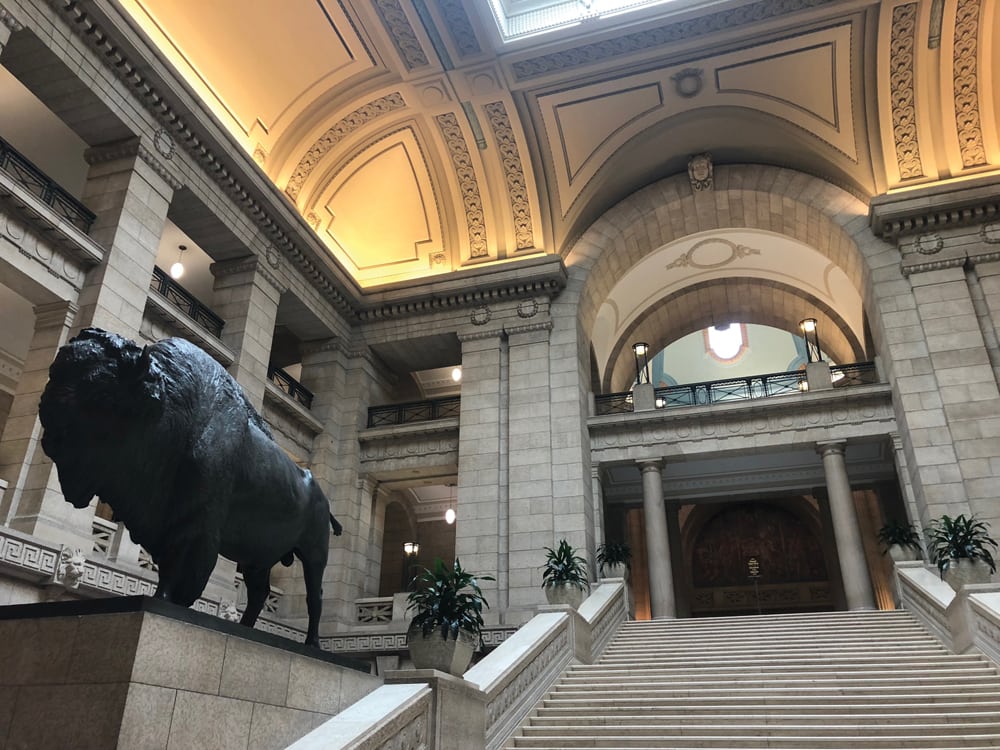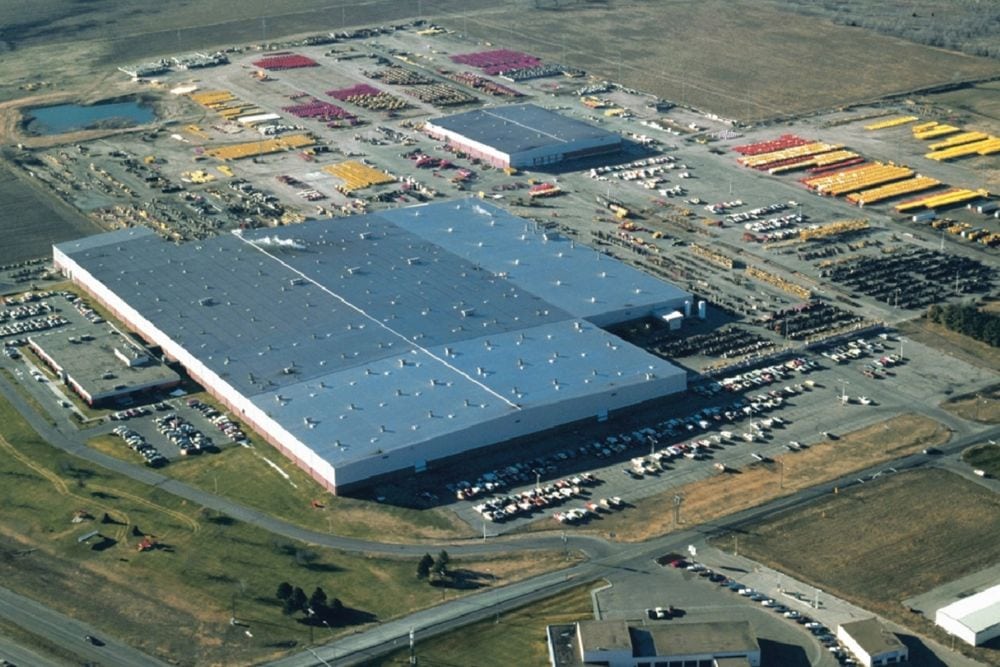Each fall, the Canadian Farm Writers’ Federation holds an annual conference in a different part of Canada. This year, the conference was in the Quebec City area.
The conference hotel was a short walk from the Old City and the Plains of Abraham, so I was able to check out both. The Old City is divided into the Upper Town and Lower Town (the Lower Town is below Cap Diamant, a large cape).
A colleague had recommended taking the funicular railway to Lower Town, and it was well worth $3. As I descended into Old Town, I had a beautiful view of the St. Lawrence and the old neighbourhoods.
Read Also

Gentle treatments for pain in the neck
Heading toward year-end, people unknowingly tense up against the cold and busyness, causing neck pain that can often be treated with appropriate support and gentle mobility, athletic therapist Kathlyn Hossack says.
A big part of my tourism strategy is to walk around, maybe get lost, and let fate decide what I find. It’s not a bad strategy for the Old City. While walking down rue de Petit Champlain, I found La Soierie Huo, a shop that sells hand-painted silk scarves and ties. When I walked inside, one of the artists was painting a silk piece stretched on a frame.
After buying a scarf for my mom’s birthday, I wandered around, before coming across a stone church in the middle of a plaza. It was the Notre-Dame-des-Victoires. It was so named because of two failed British attacks on the city. The church later burnt to the ground during the British Conquest, before being rebuilt in the early 19th Century.

I also stumbled upon the Anglican Cathedral of the Holy Trinity, in the Upper Town. It was the first Anglican cathedral built outside of the United Kingdom. What I found most interesting were the plaques, resembling gravestones, mounted on the walls inside the church. They commemorated deceased church members.
I’m always interested in the ways people died in the past. For example, Maria Cornelia Westrene died at age 38 in 1849 “after a short attack of Asiatic cholera.” She was a doctor’s wife, so it seems no one was safe from cholera.
Quebec agriculture
The annual Canadian Farm Writers’ Federation conference includes a day of farm tours. It’s an excellent opportunity to learn a little bit about farming in other parts of the country.
Our first stop was Ferme Lehoux Holstein, south of Quebec City. The Lehoux family are master breeders, selling replacement heifers to other dairies, along with producing milk. As we filed off the school bus, Germain Lehoux, his wife Claire Ouellet, their children Pier-Olivier Lehoux and Marie-Ève Lehoux, and Marie-Ève’s husband, Dany Chabot, were all on hand to answer questions and take us into the barn.

The Lehoux family has much in common with western Canadian producers. For one, the farm is a family affair, and each family member has a role.
It’s also a business. Marie-Ève, the farm bookkeeper, makes sure they’re spending wisely. There’s a fair amount of risk, and the Lehoux family must manage it well to succeed. For example, they’ve partnered with other dairy breeders to buy new genetics, which allows them to share risk.
It was also clear the Lehoux family takes a lot of pride in their farm and their herd. The cows seemed exceptionally quiet to me. Many enjoyed a scratch on the head, and all were eager to lick our camera bags and coats. My friend Laura Thygesen, who judged dairy shows in her 4-H days, was very impressed with the cows’ conformation.
Yet to say that agriculture in Quebec is exactly like agriculture in Western Canada would be untrue. This is even clear from the air, where one can see land divided into skinny seigneurial lots rather than quarter sections.
Another striking difference is that one organization, l’Union des producteurs agricoles (UPA), represents all of Quebec’s farmers. Membership is mandatory.
As Daniel-Mercier Gouin, ag economics prof at the Université Laval explained, some farmers want out, or at least different representation. L’Union paysanne says it represents small farmers (but Gouin noted they also allow citizens to be members). Les Conseil des entrepreneurs agricoles says it represents larger farms. But neither group has convinced the government to remove the UPA’s accreditation, which is legislated. That, Gouin says, makes the UPA an unavoidable lobby.
How has the UPA persisted when, in contrast, Western Canada has several different producer groups? Part of it is that when the Farm Producers Act was passed in 1972, the UPA was legally recognized as the sole association that represented all farmers. But a lot of it comes down to culture. Gouin told us that before the UPA, Catholic unions represented farmers. And Hugh Maynard, who runs Qu’anglo, an ag communications firm in Quebec, explained that Quebec has a very strong co-operative movement.
I’m not suggesting that western Canadian farmers reproduce the UPA. It’s a complex beast, and I have a rudimentary understanding of how it works, at best. But it’s certainly interesting. And I do wonder whether merging crop groups in the West can learn from the UPA’s playbook.

















